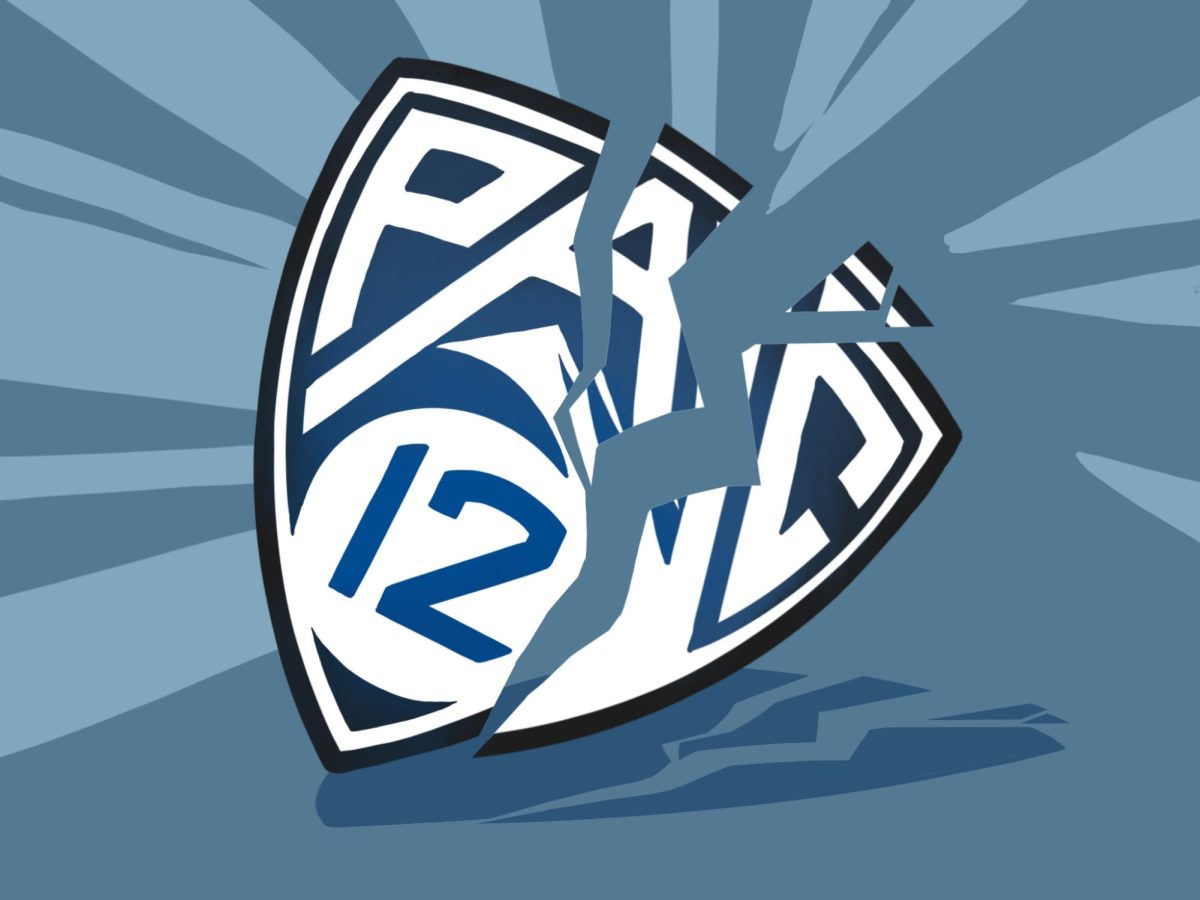University of Southern California, Stanford University, University of California Los Angeles and University of Oregon are the schools that come to mind when thinking of the Pac-12. The last 12 months, however, have changed that.
Founded in 1915, the Pac-12 has consistently been a powerhouse conference on the West Coast for over a century. Composed of 12 schools: Washington State University, University of Washington, University of Oregon, Oregon State University, Stanford University, University of California Berkeley, University of California Los Angeles, University of Southern California, University of Utah, University of Colorado Boulder, University of Arizona, Arizona State University, the Pac-12 competes at the NCAA Division 1 level in 24 sports. With USC and UCLA announcing contracts with the Big 10 conference in 2022, an additional eight teams have signed contracts with various other power five conferences over the last year, leaving what is now being referred to as the “Pac-2” in 2024. Although this news is not surprising, it has left many students, staff and coaches unsure of their future with athletics.
With exposure and money as a priority, many of the universities have left the Pac-12 in order to achieve more stability in these areas. As football remains the top-grossing sport in the NCAA, schools have disbanded from the Pac-12 in hopes to gain more TV coverage, sponsorships and NIL money with the other power five conferences. As other conferences have secured TV contracts worth billions of dollars, the Pac-12’s inability to do so has made the dissolution a very real threat for years prior to USC’s and UCLA’s commitment to the Big 10.
Active come the 2024-2025 season, the 10 teams who have left the Pac-12 will be obligated to transport all athletes and staff to competitions across the country. Since the power five conferences are split up according to the regions of the U.S., these schools will have an estimated $10 million travel increase, according to CBS Sports. Travel will not only significantly impact the players but also play a crucial role in the net revenue per university.
With coaches of other conferences calling the realignment decision hasty, they have spoken out about the effects that travel days will have on student-athletes and their academics. Certain athletes, such as ASU softball player Shannon Cunnigham, have voiced their concern about the realignment on social media. She stated that all other sports will have to adapt to the new travel schedules, severely impacting their academic performances.
Mental health is also a big concern among high level athletes, which was not taken into account when universities signed multi-million dollar contracts with other power five conferences. With lack of sleep contributing significantly to the increase in poor mental health, many athletes and coaches have made their opinions heard for the lack of sensitivity towards the athletic community. In a response to a tweet from an ASU softball player, Mississippi football head coach, Lane Kiffin, made it clear that it is unfair to athletes who were not aware of the realignment decision. With longer travel days, many are worried that exaggerated exhaustion will play a big role in the mental and physical health of athletes.
With only two teams left, WSU and OSU, many are unsure about the next step these schools will take. With a revenue drop estimated in the millions for both schools, athletes and staff are concerned about the future of athletics at both schools. WSU senior Andy Guerrero hoped his commitment to a Pac-12 school would help him play at the highest athletic level, but the recent collapse of the conference is frustrating. With the future still unknown, rumors have spread involving smaller conferences in the Mountain West. Although undecided, many are unsatisfied with the result of the disbandment.
Described as greedy and insensitive, fans, coaches and athletes have voiced their opinions about the conference realignment decisions. The overall consensus: athletes deserve better.


